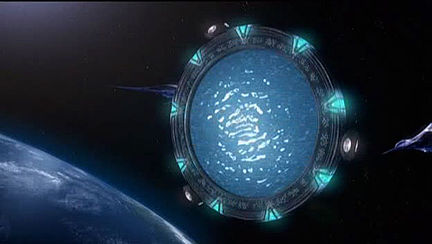Do note that the economics might be quite complicated - the cost of speed grows much faster than the savings, so unless you're transferring human passengers, it would possibly make sense to have simple, reliable ships that travel at half the speed, cutting the costs tremendously. Add in-situ refulelling on both sides (why gather fuel on Earth, when you can mine the comets and asteroids to make fuel and containers you can then drop on Earth?), and the main costs is making the reliable automated systems.
Now, you would need some insanely reliable systems, not even close to what we can make today. But at the same time, you could trade any resource you wanted - you might not want to have an ecology-destroying deep mantle mine on Earth or another populated world, but strip-mining non-populated worlds would be easy and wouldn't make most people mad :)
What technology would this imply?
- All this work must be automated. In space, and especially in a different solar system, humans are extremely expensive. Of course, you would still want a couple humans ready nearby, but there's no point in having humans handling zero-G-jackhammers on some asteroid.
- Insane reliability. You'd need the ships to survive (say) a hundred years with no human maintenance. Auto-mines and auto-factories could do with shorter maintenance cycles, as long as they can also be heavily automated - we're still talking about a huge automation:human ratio.
Humans would still have a reason to travel (and they would usually take the express, 0.75c+ ships). You'd need the architects, technicians, scouts, scientists... it would be a tiny volume compared to the automated traffic, but quite enough to make a story. Maybe it would even be possible to have something akin to Aldrin cyclers, if it makes sense - you'd still need the capability to reach 0.75c (and back again) on your shuttles, but they wouldn't need all the life support space and hardware for the multi-year trip. It would probably be quite tricky to maintain precision, but the cyclers could have crews and limited path correction capabilities. Of course, this would only make sense if you could accelerate fast enough to make it worth it - if you're looking at a 50 year long trip and you spend a year catching up with the cycler's velocity, that's probably a reasonable saving. If your trip takes just four years, though...
There's also a few other options to make the trip more economical, most dealing with in-situ resource utilization as well. For example, the ships could gather their fuel in Bussard Ramjets - though do note that this poses not just a technological challenge, but also a fixed speed limit.
So in the end, really, even with realistic science, it's possible to make money by shipping resources interstellar. However, there's one huge difference between this and "just digging another hole on Mars" - return on investment. The largest investments these days still bring at least some income in a few years (most are more on the line of months), and that's going to be tricky to achieve with interstellar travel. Some part might be paid upfront by other interested parties - say, corporations/countries wanting places on your ship to stake claims, tourists (think more like the pilgrims travelling to America rather than Bill Gates hitching a ride to Tau Ceti and back). This could be used to create drama and tension in the story, of course.
The greatest problem with this approach (e.g. no "one of a kind" resource that simply isn't found in the Solar system) is that it's hard to imagine how insanely huge our economy would have to be to require enough resources to warrant exploiting other solar systems. We're really talking about strip-mining-planets-scale - anything less would be quite possible to do in the solar system as well. So the main incentive should be something that requires both natural resources (so that it makes sense to build it on a planet) and raw surface area. For example, imagine some genetically designed bacteria that feeds on water and light, and produces space-fuel. Spray them on an oceanic world, taking up 95% of the surface area, and even with relatively low efficiency it could be an important source of fuel. It's again something that you don't want to do on your own homeworld, but requiring little in terms of maintenance, and producing immense amounts of usefull resource that isn't found easily on, say, Mars. Of course, with cheap energy, people soon follow, and you have thousands of stories to tell :) The same cheap material, and different bacteria to the mix, and you can go on the scale of terraforming planets for human habitation - remember, we're already on the scale of hundreds of years, so if it's worth it making mining companies over that time-scales, terraforming starts becoming reasonable.
The key point is you have to think of easier or cheaper solutions to the same problems. In my bacteria scenario, I've eliminated these:
- Why planets? We need a spot with liquid or gas water - it makes it easy to supply the bacteria with raw materials. The currents can also be used to transport the finished product to places from where it's actually extracted by the transports.
- Why another solar system? Well, we need an ocean and plenty of sunlight - even if we setup the production on every useful planet in the Solar system, we'll eventually run out of easily accessible raw materials and more importantly, surface area. While you can use space satellites to gather much more of the sunlight's surface area, it's incredibly expensive and tricky, even compared to interstellar travel.
- What's the point? A cheap source of fuel would mean a positive feedback loop on making spaceflight cheaper in turn - it will naturally eliminate the energy costs almost entirely over time. Imagine gas prices of not 1$ per gallon, not 1c, but 0.000001c! You can again have as big a car as you want! As long as you can also make making the spaceships cheap enough, you can make interstellar explorers a lot more common sight over time; perhaps in ten thousand years, someone found something really interesting, and that's when your story starts?
With the scale we're working with here, the first supply ships would pretty much crash the energy/resource market on Earth (unless you carefully made sure not to increase the supply too fast, which isn't a bad idea from an economical standpoint, really - you want to maximize your profits, so you need to find a nice balance between lowering prices and growing sale amounts). This of course also means that your margins will get smaller over time, but the initial margins possible could be quite interesting. It might be even more interesting if you imagine humanity's future governments being even more socialist and inflationary than today's - you could get around a lot of costs associated with socialism (like having to conform to whatever regulations, paying out social premiums, whatever) and both the spaceships and the mining wetware would tend to maintain value rather well, so even if RoI would be long, it would also be pretty solid. Of course, it also brings another risk - after your first supply ships start arriving, someone might just ban you. Talk about a bummer. Of course, you do have weapons travelling at significant fractions of the speed of light, so who's really going to argue with you, eh? :D







